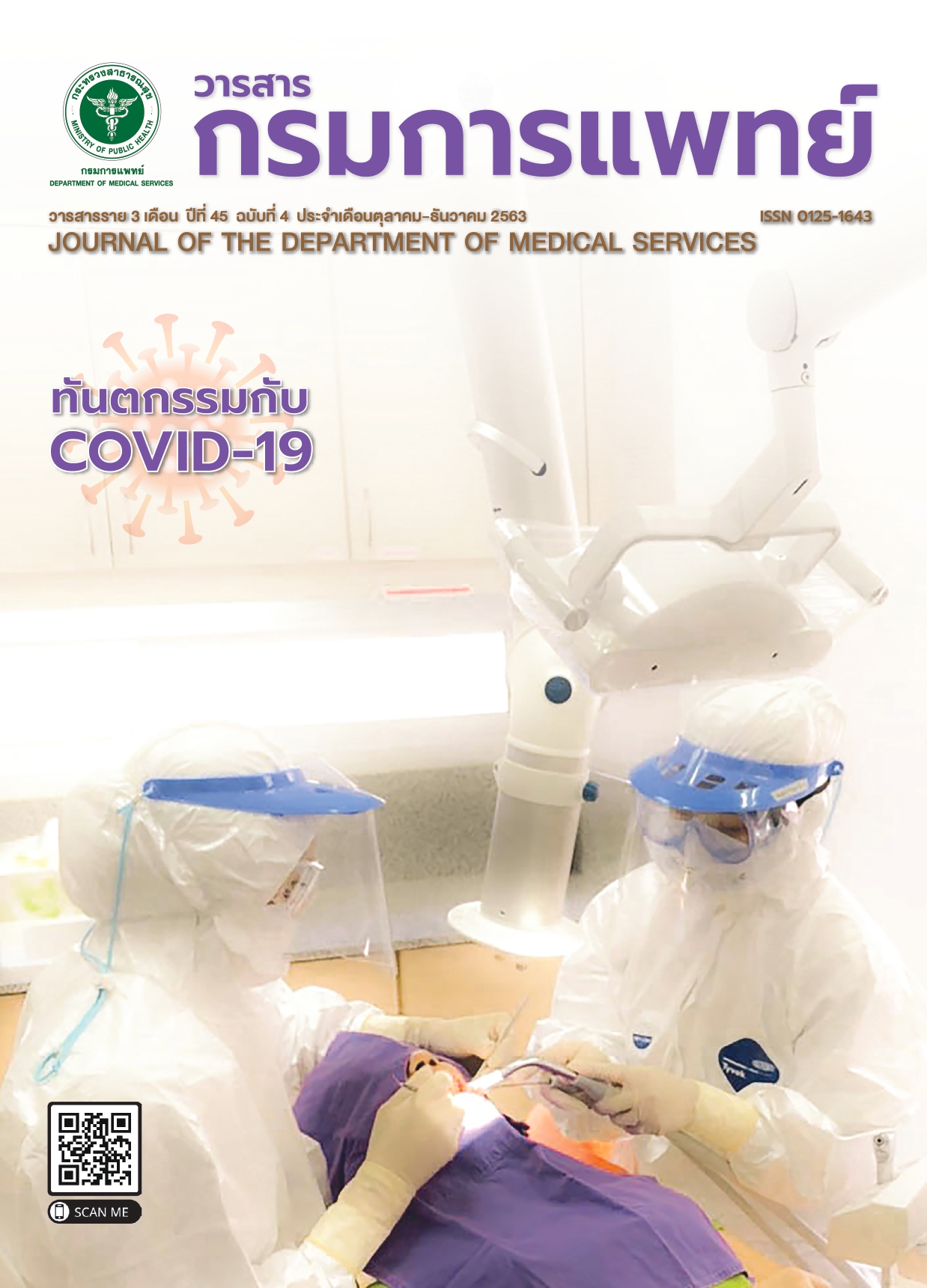Cost-Effectiveness Analysis of Esophageal Cancer Screening in Patients with Hypopharyngeal Cancer Using Transnasal Esophagoscopy Compared with Rigid Esophagoscopy
Keywords:
Hypopharyngeal cancer, Esophagoscopy, Cost-effectiveness analysisAbstract
Background : Patients with cancer of the hypopharynx were found to have synchronous esophageal cancer about 10 percent during pretreatment evaluation. The former screening tool for esophageal lesion was the rigid endoscopy which was proceeded in the operating room. But nowadays, transnasal esophagoscopy is the latest screening tool for esophageal lesion. This tool is more convenient than former tool because it can be done in the outpatient department.
Objective : The objective of this study was to assess cost-effectiveness of transnasal esophagosocopy versus rigid esophagoscopy for screening the esophageal cancer in patients with hypopharyngeal cancer.
Method : The cost-effectiveness analysis was based on decision tree model and determined from the healthcare provider perspective. The choice of screening the esophageal cancer was the rigid endoscopy method which was performed in the operating room or the transnasal esophagoscopy method which was performed at outpatient department.
Results : Cost per patient of transnasal esophagoscopy was 18,907.20 baht while cost per patient of rigid esophagoscopy was 12,725.81 baht. The main cost of transnasal esophagoscopy was capital cost while the main cost of rigid esophagoscopy was admission cost. In the cost-effectiveness analysis from the model by simulated the data from 1,000 patients, the total cost for substitute the rigid esophagoscopy with transnasal esophagoscopy was 4,839,776.07 baht and add the efficacy of screening in 57 patients. Therefore, to increased success rate of screening by using transnasal esophagoscopy in one patient, the hospital had to expense 84,778.95 baht. In the sensitivity analysis, the efficacy of TNE increased if the total cost of TNE was reduced and/or the complication rate of RE was higher.
Conclusion : Transnasal esophagoscopy has the efficacy and also could be substituted for the former endoscopy in order to screen the esophageal cancer in patients with hypopharyngeal cancer. Nonetheless, the healthcare provider should concern about capital cost and numbers of patients before purchase this equipment.
References
Imsamran W, Chaiwerawattana A, Wiangnon S, Pongnikorn D, Suwanrungrung K. Cancer in Thailand Vol. IX,2013-2015.New Thammada Press (Thailand) Co.Ltd. Bangkok; 2018.
McGarey PO, O’Rourke AK, Owen SR, Shonka DC, Reibel JF, Levine PA, et al. Rigid Esophagoscopy for Head and Neck Cancer Staging and the Incidence of Synchronous Esophageal Malignant Neoplasms. JAMA Otolaryngol Head Neck Surg 2016; 142:40.
Ritchie AJ, McManus K, McGuigan J, Stevenson HM, Gibbons JR.The role of rigid oesophagoscopy in oesophageal carcinoma.Postgrad Med J 1992; 68:892–5.
Shaker R. Unsedated trans-nasal pharyngoesophagogastroduodenoscopy(T-EGD): technique. Gastrointest Endosc1994;40:346–8.
Postma GN, Cohen JT, Belafsky PC, Halum SL, Gupta SK,Bach KK, et al. Transnasal Esophagoscopy: revisited (over700 consecutive cases). Laryngoscope 2005; 115:321–3.
Mohammed H, Del Pero M, Coates M, Masterson L, Tassone P, Burrows S, et al. Office-based transnasal esophagoscopy biopsies for histological diagnosis of head and neck patients.Laryngoscope 2019; 129: 2721-6.
Sombuntham P, Rawangban W. Unsedated transnasal esophagoscopy: A sensitive and safe outpatient screening tool. Asian biomedicine 2015;9: 491-4.
Riewpaiboon A. Standard cost lists for health economic evaluation in Thailand. J Med Assoc Thai 2014; 97: S127-34.
Report of the general consumer price index of Thailand 2015.(cited 2019 Dec 20) Available from:http://www.indexpr.moc.go.th/price_present/TableIndexG_region_y.asp?year_base=2558&nyear=&province_code=5&table_name=cpig_index_country&type_code=g&check_f=i&comm_code=4
Su YY, Fang FM, Chuang HC, Luo SD, Chien CY. Detection of metachronous esophageal squamous carcinoma in patients with head and neck cancer with use of transnasal esophagoscopy. Head Neck 2010;32:780-5.
Farwell DG, Rees CJ, Mouadeb DA, Allen J, Chen AM,Enepekides DJ, et al. Esophageal pathology in patients after treatment for head and neck cancer. Otolaryngol Head Neck Surg 2010; 143:375–8.
Tsao GJ, Damrose EJ. Complications of esophagoscopy in an academic training program. Otolaryngol Head Neck Surg 2010; 142:500–4.
Orban NT, Ogawa T, Atun R, Corbridge R. Trans-nasal oesphagoscopy: cost implications for a change in practice:how we do it. Clin Otolaryngol2009; 34:380–5.
McPartlin DW, Nouraei SAR, Tatla T, Howard DJ, Sandhu GS.How we do it: transnasal fibreoptic oesophagoscopy. Clin Otolaryngol 2005;30:547–50.
Downloads
Published
How to Cite
Issue
Section
License
บทความที่ได้รับการตีพิมพ์เป็นลิขสิทธิ์ของกรมการแพทย์ กระทรวงสาธารณสุข
ข้อความและข้อคิดเห็นต่างๆ เป็นของผู้เขียนบทความ ไม่ใช่ความเห็นของกองบรรณาธิการหรือของวารสารกรมการแพทย์



